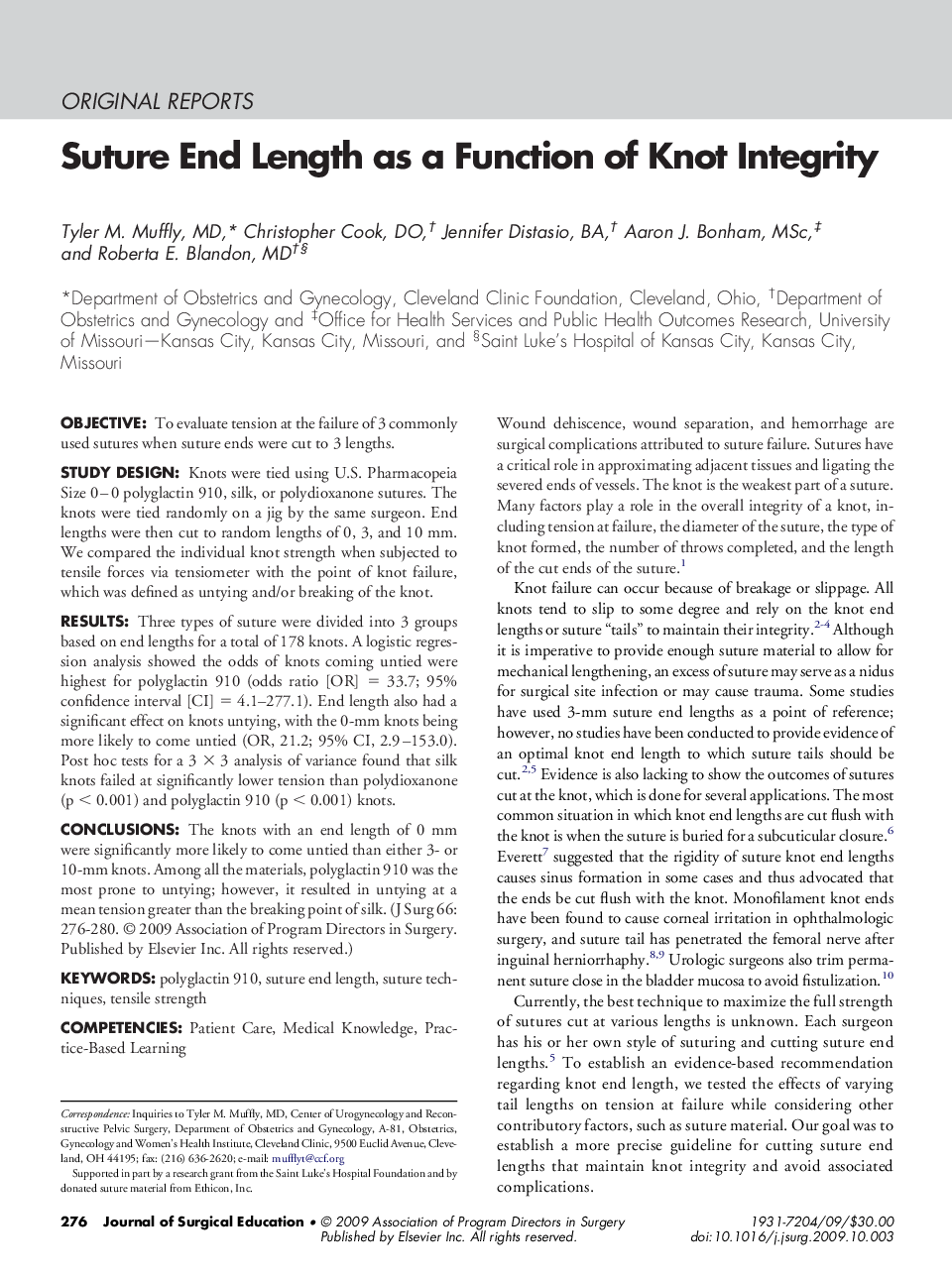| کد مقاله | کد نشریه | سال انتشار | مقاله انگلیسی | نسخه تمام متن |
|---|---|---|---|---|
| 4298787 | 1288368 | 2009 | 5 صفحه PDF | دانلود رایگان |

ObjectiveTo evaluate tension at the failure of 3 commonly used sutures when suture ends were cut to 3 lengths.Study DesignKnots were tied using U.S. Pharmacopeia Size 0–0 polyglactin 910, silk, or polydioxanone sutures. The knots were tied randomly on a jig by the same surgeon. End lengths were then cut to random lengths of 0, 3, and 10 mm. We compared the individual knot strength when subjected to tensile forces via tensiometer with the point of knot failure, which was defined as untying and/or breaking of the knot.ResultsThree types of suture were divided into 3 groups based on end lengths for a total of 178 knots. A logistic regression analysis showed the odds of knots coming untied were highest for polyglactin 910 (odds ratio [OR] = 33.7; 95% confidence interval [CI] = 4.1–277.1). End length also had a significant effect on knots untying, with the 0-mm knots being more likely to come untied (OR, 21.2; 95% CI, 2.9–153.0). Post hoc tests for a 3 × 3 analysis of variance found that silk knots failed at significantly lower tension than polydioxanone (p < 0.001) and polyglactin 910 (p < 0.001) knots.ConclusionsThe knots with an end length of 0 mm were significantly more likely to come untied than either 3- or 10-mm knots. Among all the materials, polyglactin 910 was the most prone to untying; however, it resulted in untying at a mean tension greater than the breaking point of silk.
Journal: Journal of Surgical Education - Volume 66, Issue 5, September–October 2009, Pages 276–280